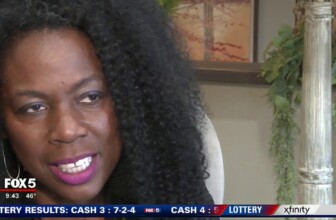The Sun and Skin Cancer – Primary Prevention Strategies
Dr. Susan Swetter, Director of Stanford's Melanoma Clinic, speaks at 2011 Women's Health at Stanford Forum about skin cancer and suggested ways to protect oneself from the sun.
http://med.stanford.edu/profiles/Susan_Swetter/
http://stanfordhospital.org/clinicsmedServices/clinics/melanoma/melanomaPLCMC.html
um I'd like to introduce Dr Susan sweater um she's a professor in dermatology and director of the melanoma Center so she will tell us all about sun and skin cancer this afternoon thank you here we go so I'm going to talk about some of the primary prevention strategies we have to reduce sucess of sun exposure and therefore skin cancer now when we talk about sunlight actually only about 6% of ultraviolet radiation that reaches uh the Earth surface is ultraviolet light the vast majority of the solar or sun radiation reaching the earth's surface is infrared and visible light we take a look at the UV or ultraviolet light itself about 95% is UVA about 5% is UVB and none of it reaching the Earth surface is UVC because it's completely blocked by the ozone layer so what does ultraviolet light do to the skin this is a picture of a kind of a cross-section of the skin in cartoon form and the top layer is the stratum corium that's a renewing population of cells that you think about the rough dry skin uh the stratum corneum below that are keratina sites which are the main layer of the top layer of the skin uh at the junction between the epidermis the top layer and the dermis below it is the basil layer and that contains pigment cells called melanocytes and then in the dermus we see blood vessels collagen elastin all of the connective tissue and then below that is subcutaneous fat now what does the Sun do to the skin it cracks the stratum corium it fissures it you're going to think about a clinical correlative dry skin easy fragility the epidermis gets thinner again contributing to fragility we also see keratinocytes those skin cells become atypical and I'll show you some of the sequella of that the melanocytes change in their configuration the pigment changes as well and you'll see uh Sun freckles called solar lentigenes as a result and as the dermis gets thinner over time and again this is a normal process of Aging where everyone loses subcutaneous fat but with the sun exposure you will see significant thinning of the dermis it will cause loss of the elastin and collagen tissue which causes sagging of the skin wrinkling and then the blood vessels become more prominent so we see a lot of easy bruising in individuals as they get older and that is accelerated by the Sun so ultraviolet B is a main wave length of light uh 290 to 320 nanom that is responsible for Sun it is kind of our sunburn Ray and it also contributes strongly to skin cancer it does penetrate that top layer the epidermis and also the epidermis upper dermis not epidermis and um it is interesting and that it has both seasonal and daily variations so we see it being significantly more intense in the summer months it's more intense in the mid afternoon hours 10 to 4:00 p.m. it also increases with higher altit altitude so that can be a real issue as we have hikers and skiers uh in in the corresponding months of the year who are much more susceptible to UVB at altitude uh it is largely absorbed by the ozone layer and blocked by window glass but when we think about the EPA estimates of the ozone layer thinning this harmful radiation will reach the Earth's surface more frequently ultraviolet a is a longer wavelength it will penetrate uh more deeply than UVB somewhere into the mid dermis it is partially blocked by window glass um it is not blocked by the ozone layer so again about 95% of the UV radiation reaching the Earth surface is comprised of ultraviolet a and unlike UVB it's strong all day and all year so we see this this is not a way that we have to we think about it just being intense all year long ultraviolet a has become more important and better understood in terms of the damage it causes and it really is more of a photosensitizing ray so individuals who have disorders like lupus or on blood pressure or other medications that sometimes make them susceptible to rashes in the sun are going to be have this accelerated by UVA it causes cataracts in the eye which is a clouding of the lens um and it also contributes to skin cancer and that's really come to light as we've understood the impact of tanning bed use over the last 20 or 30 years and tanning beds emit largely UVA so we're going to talk we've talked about some of the things that UV radiation can do and I'm going to focus on skin cancer because uh it is uh the most medically important and can be fatal in 2011 uh we are looking at over 3 million cases of Basil cell carcinome which makes it the most common cancer in the US and the most common cancer worldwide there are no specific statistics for this because it's not considered a reportable cancer to Registries that then feed into the National Cancer Institute Seer database the same is true for scamma cell skin cancer and there's about a half a million cases and these numbers were based on a more recent estimate using 2006 Medicare billing which was actually more accurate than any numbers that we had before now melanoma occurs in much smaller numbers overall but it's the most deadly of skin cancers about one in five Americans will develop skin cancer and again the most frequent are going to be these non-melanoma skin cancers the basil cell and the scamac cell skin cancers which again have low rates of death but can cause significant morbidity and by that we mean downtime from work cosmetic impairment loss of wages all sorts of things healing discomfort and this is a an astronomical cost when we look at the the millions of these cancers that are being diagnosed and treated each year um the melanoma is the most deadly from and I'll focus on that in a few minutes now we do have a recent significant cause for concern in women regarding skin cancer incidents and this was based on multiple studies now that have been done looking at both melanoma and those non-melanoma skin cancers and about a 30-year period from the mid 70s to the mid 2000s and what we're seeing are significant increases in both melanoma and non-melanoma skin cancers we're not seeing this in men and this incidence really has heightened from about 1990 onward so this suggests a Birth Cohort effect of women born after 1965 and we have to ask ourselves from an epidemiologic level what's changed well nothing in the environment's changed between really men and women so much women may be outside their bathing suits may be skimpier spaghetti straps Etc um but there's nothing really from a genetic or host susceptibility standpoint that's changed and the only thing we can attribute this to is the acceleration of tanning bed use so tanning beds became prevalent in around 1980 or so and we seeing these young women who started to use tanning beds now over this period of time who are now developing more skin cancers so this is a significant issue and we do see this now particularly and I'll talk a little bit more about tanning beds but um they really do Target vulnerable young women in particular and teens and the restriction for minors to use tanning beds is very sparse Nationwide so who gets skin cancer we talk about a sun sensitive phenotype and we rate uh the skin based on uh its exposure to sun and how much pigment pigment it has pigment is called melanin so the more melanin your skin has the darker the skin color is and we have a multitude of skin types one through six with one being the very fair skin type six being very dark usually African-American skin this is an example of a young woman or young girl with um type one skin you think of someone with red hair green or blue eyes lots of freckles often a Celtic background and these individuals are at highest risk for skin cancer most Caucasian skin is around phototype two or three which kind of burns or Tans moderately interestingly we are seeing more skin cancers both melanoma and non- melanomas in Darker skin phenotypes um and we're talking about now more melanoma specifically in the Latino population and African-American population and so I think this is really highlighting again an epidemic of melanoma basil cell carcinoma is the most common type of skin cancer we usually see this in Sun exposed areas it's very clearly sun induced um it usually is sort of pearly or pink kind of shiny it has blood vessels often coursing through it so in when a when a man in particular will get basil cell on the face and shaves over it this is a spot that's going to bleed all the time and kind of a think good Hallmark of skin cancer is you know non-healing sore it doesn't go away it's not a pimple that resolves in a week or two so that's what you have to think about um it it does tend to do well in terms of not causing death but as I said these larger tumors can cause a lot of cosmetic impairment and morbidity with wound healing and surgery this is an example these are kind of again shiny pills again usually Sun exposed areas now scamma cell carcinoma is important because while it's a second most common type of skin cancer it's also causes a fair number of deaths per year about 2,000 deaths per year are from metastatic Squam cell carcinoma that started with a skin cancer and this is particularly true in individuals who are chronically immunosuppressed and you have to think about a person who's had an organ transplant they're on immunosuppressive drugs so they don't reject the organ that was transplanted the kidney the heart the liver the lung and so we've seen this in the organ transplant population in particular and we as dermatologists follow these patients very strongly in conjunction with the transplant team because the sisol carcinomas can be so dangerous now sisol carcinoma has what's called a precursor lesion actinic keratosis and I imagine there are a number of individuals in the room who've had these rough Sandy almost gritty feeling papules meaning small bumps treated with cold sprays which liquid nitrogen cryotherapy these aren't really precursors to Squam cell carcinome in the sense that each one turns into an SEC in reality very very few of these will actually transform into a cancer but there's certainly a marker of increased sun damage and a propensity to get skin cancer and so we do treat them the scrol carcinomas themselves are Reddish often again more can have erosions or crusts on them they still can bleed easily like basil cells so again bleeding lesions non-healing lesions Sun exposed areas have it evaluated now for melanoma this is our most deadly form of skin cancer Al although it's the least common subtype that we see and about one person in the US dies every hour from metastatic melanoma um and I want to talk about the death rate just a little bit in that about 9,000 individuals are estimated to die this year we don't have the formal 2011 statistics 8700 was the number in 2010 two-thirds of those individuals will be men compared to women and this is a major issue that we study at Stanford in terms of why we're not reaching the older male population and and men don't navigate the Health Care system as well as women they don't participate in skin screening they aren't uh as tuned into talking to their physician or healthc care provider about what's going on in their skin and other aspects of their health and so we really are relying increasingly on women and partners spouses to really engage in skin self- exam practices making sure their husband goes to the doctor and gets examined and we're hoping that that makes a big difference in terms of the death rate that seeing in men we talk about a melanoma epidemic and this is why this is a a graph looking at 50 years of data from 1950 to 2000 and you can see that melanoma has outpaced it's the Topline has outpaced all other cancers here by 300% and part this is due to us being better at detecting these lesions and patients looking at their skin and going to the doctor but when we take a look at at the types of melanomas we're seeing that are increasing we're also seeing thick cases increasing and those aren't ones that are really detected by screening so much as thin cases and so the melanom epidemic we believe is real and and largely attributable again to a lot of change in recreational and occupational sun exposure uh right now melanoma is the fifth most common cancer in men and the seventh in women we do see most cases diagnosed at around age 59 or so uh but it is the most common cancer in women in their late 20s and is second only to breast cancer and women in the early 30s there are major risk factors for melanoma these include a changing mold uh that's actually a warning sign but older age male gender uh large numbers of moles or atypical moles that sun sensitivity and then family history of melanoma are all important risk factors that should lead one into uh skin cancer screening or routine exam by their physician uh we talked about the warning signs a is asymmetry B border irregularity C color variegation so multiple colors in a mole diameter being larger than a pencil eraser and then e has been added it means evolving over time and this is based on a European pneumonic for melanoma detection called The Ugly Duckling sign so if a lesion simply doesn't look like the rest have it evaluated I think it's very helpful and easy to remember there are multiple types of melanoma we see the most common is superficial spreading which is the slide on the left this generally has those ABCDE criteria so a lesion can be picked up very early if if again those are recognized the lentigo maligna melanoma on the right typically occurs in older individuals it's often very flat time and then we may see a nodule develop on the right here you see acral lenus melanoma here's a subungual variant occurring under the fingernail so pigmented streaking in the nail or any kind of bleeding of the pigment onto the skin around the nail is very important to have evaluated and the acral antigonous type of melanoma is the most common type we see in Darker skinned individuals who are at lower risk of the more sun sensitive or sun related types so looking at the Palms and soles on darker skin individuals looking at the nails on the fingers and the toes are very important now the nodular melanom on the left is a difficult subtype for us and it has sort of eluded early detection for dermatologists uh and Physicians all over the world uh for many many years it tends to elevate grow higher ulcerate and bleed I like to say it has the Band-Aid sign more than the ABCDE sign so we're trying to find ways so that people can recognize this lesion a little earlier thinking about elevation firm lesion growing rapidly over a month no matter what the color is but it can be a tough one to detect her so how do we prevent skin cancer it's estimated if we practice skin cancer and fair skin individuals from Early Childhood on we could potentially prevent about 75% of skin cancers over a lifetime and the goal is to reduce in our primary prevention excessive ultraviolet exposure since we know that close to 70% of melanoma is worldwide are in some way related to sun exposure sun exposure uh reduction programs have been around in the US Australia and Europe now for 30 years they started in the 70s or so they can be very useful the problem is we still have to wait several more decades to see if they make a difference in terms of the new cases the incidence of melanoma because most cases again will occur after age 50 but they're certainly uh worth uh partaking in vitamin D has created a bit of a problem for uh skin cancer and and uh the whole issue of primary prevention because the tanning salons in particular are promoting that the sun is good for you and we've already heard a little bit about the benefits of vitamin D and there's no question of its effect on bone health but it also has been proposed to result in perhaps better rates of mortality in other words lower death rates in certain cancers including melanoma so if we look at kind of a latitudinal gradient at individuals who live closer to the Equator lower latitude we'll see improved rates of survival excuse me and the question is whether this is related to Vitamin D from the Sun you get your vitamin D from diet you get it from supplements oral supplements and you get it from the Sun particularly from UVB which undergos a photoc conversion uh in the skin or causes the vitamin D to turn into its active D3 metabolite the problem is we don't really know the role of vitamin D in cancer protection including melanoma and its role in survival and then the amount of vitamin D you need every day based on the sunlight exposure and how that relates to your serum your blood levels of vitamin D is also questionable although it's actually been studied now in Greater detail it turns out that feris skin individuals are very efficient at the photoon version of vitamin D so after about 5 to 10 minutes of incident sunlight that's your incidental sunlight you're going to get walking to and from the car um it it actually you will probably max out your skin vitamin D production darker skin individuals are much less efficient at that production they need seven times or more of that additional sunlight to have the same photo conversion so the public health message from tanning salon operators is completely wrong you don't need as a fair skin individual to get more sun it's darker skinn individuals who need more sun that being said we're not recommending the Sun as a safe way to obtain adequate vitamin D levels it's far safer and more predictable to take oral supplements and to try to get increased Vitamin D from the diet and I think most people are aware that the Institute of medicine's recommendations on oral supplementation went up just a little bit to 600 uh international units a day for the vast majority of adults and and we recommend slightly higher for folks who are aggressive sunscreen users tanning well what is tanning tanning is the way that your skin protects itself against sunburn any tan means that the skin is damaged the DNA is damaged this will increase uh the risks of photoaging it will certainly cause photoaging that wrink wrinkling and sagging of the skin and it will contribute to skin cancer uh the tan itself does not prevent skin cancer it does again just help prevent against further sunburn there is one safe kind of tan it's artificial and this is by putting the sunless Tanners or bronzers on your skin they contain chemical called dihydroxy acetone this is a stain it stains that top layer the stratified or the um stratum corium and it will wash off over time as that layer of skin renews itself in a week or so the tan isn't protective against sunburn but that is a safe tan the bottom line though is that when you talk about ultraviolet induced tan whether it's from natural sunlight or tanning beds it is not safe in any way now tanning beds uh emit mostly ultraviolet a and both the UVA and UVB that they they emit is about 15 times stronger than natural sunlight so spending a half an hour in a tanning salon in a tanning bed uh without sunscreen which is what most people would do would uh is about it's equivalent to about a day of baking on the beach it's bad news meel uh the tanning bed use has really been shown to increase rates again of both melanoma and non-melanoma skin Cancers and in a large pulled analysis that was done in international data there was a 75% increased lifetime risk of getting melanoma if you'd ever used a tanning bed less than ag35 in 2010 alone there were four studies out of the US Australia Iceland and um uh what was the last one Scandinavia that showed significant increased risks for melanoma with tanning bed users and again the problem is most of these are young women starting and their teen years and the rates of melanoma the risk of melanoma increased in individuals who started at younger ages and used them more frequently so can you prevent sunnd damage and photoaging um we have a lot of suns safe strategies they're they're pretty intuitive um but it's I think really hard to impart this message particularly in in young women um avoiding the sun covering up using sunscreens certainly avoiding tanning bed use um using alternative techniques and and Tanning accelerators are not yet FDA approved so this will kind of roll the talk into how effective sunscreens are sunscreens absorb or reflect harmful UV rays and the sunscreens traditionally protect against Sun burn so the SPF which is called the sun protection factor is actually a sunburn protection factor it's for UVB protection only and essentially it's the amount of time you can spend in the sun with a sunscreen before your skin turns red before it sunburns over the amount of time you spend in the sun without a sunscreen before you burn so if you add an SPF of 10 into a product it should give you 10 times longer in the Sun not that we recommend that you spend 10 times longer in the Sun the higher the SPF uh the the the more protection you get although it is questionable uh if you have a 90 uh I'm sorry if you have an SPF of 15 you block about 93% of UV if you have an SPF of 50 you block 98% the problem is that consumers don't put on enough and so uh because consumers are putting on only up to about a quarter to a half of what's needed um that we are not getting the same SPF that's advertised in the uh the product that you buy we do also need broad spectrum to protect against UVB and UVA now the chemical sunscreens uh are those that are called organic this is confusing people think inorganic and organic organic is safer organic here comes from organic chemistry so that's why they're organic the inorganic sunscreens or physical sunscreens are made from inert substances the chemical sunscreens will absorb UV radiation they contain a number of of different types of both UVB and UVA absorbers the physical sunscreens are blocking agents that contain zinc oxide and titanium dioxide and all of these will allow some Ultra ultraviolet light to penetrate the skin so there's no such thing as a total sun block at this point now in terms of these physical blockers again they're inorganic pigments they're much better accepted cosmetically than they used to be they've been micronized so that these particles aren't as opaque when you put them on the skin the problem is by themselves they do not block into the far UVA spectrum and so I'm not an advocate of promoting these alone for broadspectrum coverage they need to either be combined with chemical sunscreens or uh have the chemical sunscreens used in in Li of them and there will be some better ones on the market that block into the uh far UVA range but they're not available in the US yet so what is broadspectrum protection it's got to protect against both UVA and UVB and this is now an FDA mandate as of May 2009 so any product now that's out there that says broadspectrum has to have a a photost stabilized UVA filter our traditional UVA filter was Ava benzone Ava benzone um is a great drug for blocking into that far UVA Spectrum the problem though is that it is photo labile meaning it breaks down in the sun after about 20 or 30 minutes which means it's no good so it has been photost stabilized with the addition of other agents and the one that's available in the US is octocrylene so when you go to the store and looking for broads Spectrum make sure you use Ava benzone with octocrylene there are other photo stabilizers that are available um there is mexil which is an anthelios there are the helioplex products both of those also contain octocon Kine so octocrylene is the main photo stabilizer in the US there are better ones too that are going to be developed um well they've already been developed in other countries and they're now being looked at by the FDA and tinosorb M is is going to be I think a very important sunscreen as it hopefully makes it to the US market soon but this is kind of a key slide I would say is you know broad spectrum coverage you want to go into the far UVA range and so really look for that photost stabilized UVA filter the sunscreens themselves uh do protect against uh pre-cancers they actually prevent them they can prevent scamac cell skin Cancers and for the very first time we have data from the last year out of a large Australian study that was a 10-year study showing that regular daily use of sunscreen reduced the risk of melanom by 50% in the users compared to the control group but we don't recommend folks rely on sunscreen alone you want to also practice safe sun in terms of avoiding that midday intense sun and the UVB sun and using protective hats and eyewear so we do Advocate kind of a sun protection package sunscreens are an adjunct to shade and protect Ive clothing water resistance I'll just mention there's no such thing as waterproof these are now from the FDA going to be water resistant or very water resistant depending on how long the UVB protection lasts the SPF uh after either 40 or 80 minutes of water immersion so in terms of how to use sunscreens you want to make sure you use enough two to three teaspoons um sorry two to three tablespoons to the entire body and one teaspoon to the face generally the chemical sunscreens and most it's good to apply them on dry skin 15 to 20 minutes before exposure to allow them to absorb and they need to be reapplied after swimming or heavy exercise common sense in sunscreen use is crucial and so we've talked about not using these to extend sun exposure um and uh really using these as an adjunct to shade so future directions and I think this is near my last slide uh really to think about what we can add to sunscreens to make them more effective and and either topical or systemic antioxidants to supplement photo protection and cancer prevention are being looked at this is sort of the field of neutral antioxidants are already being added to the sunscreen preparations vitamin C is very photo laball it breaks down a topical vitamin C I should say in the Sun and so we have to be careful about adding it to products so that it works but I think this is interesting um we also have a number of new UVB and UVA absorbers that have been developed and approved in Europe and Japan they cover the entire spectrum of ultraviolet light uh in the US one of these was approved a camil which is the product in mexo anthelios and there are seven that are currently under FDA review and fortunately they're in a a time and extend of application use a tea use which is faster than the typical FDA review and it's based on their safety and efficacy and studies worldwide and so hopefully these will make it to the US market relatively quickly and these newer agents uh the triols and tri TR Tri triols um are I think going to be very effective for sunscreen but probably not available in the US for several more years wash on soaps and sunscreens I think are going to be very helpful too this will be particles that are embedded in a soap easy and more compliant for uh those who are reluctant to put on any greasy creams so we are never going to revert to the beach scene of the early 1900s um I think it looks very uncomfortable but of course it was very good in terms of sun protection this is a good start this is from the desert museum in Tucson Arizona uh I took this picture in the women's bathroom I loved it generic sunscreen SPF 30 I had my husband go check in the men's bathroom and it was there but prob not being used at all and uh this I want to just note and there's a flyer in the back and we'll leave some outside but we conduct a an annual free skin cancer screening in the department of Dermatology uh we're happy to take a look at your skin and if you have any questions or you want to drag a loved one in or teen or husband anyone in just come take a look we're happy to this is on May 21st from 9:00 to noon thank you the proceeding program is copyrighted by the Board of Trustees of the Leland Stanford Jr University please visit us at med.stanford.edu
#Sun #Skin #Cancer #Primary #Prevention #Strategies
source
The Sun and Skin Cancer – Primary Prevention Strategies
11 August 2025
At 4utoday, we are your ultimate destination for the best deals, offers, coupons, articles, and reviews. Our platform provides a wide range of discounts and promotions on various products and services.
With a dedicated team searching the web, we bring you the most exciting savings. Our informative articles and reliable reviews help you make informed decisions. Join us on our journey to discover incredible savings and make smarter shopping choices.
With a dedicated team searching the web, we bring you the most exciting savings. Our informative articles and reliable reviews help you make informed decisions. Join us on our journey to discover incredible savings and make smarter shopping choices.
Affiliate Disclaimer:
At 4utoday, we may participate in various affiliate marketing programs. This means that we may earn a commission from qualifying purchases made through the links, advertisements, or promotions on our website. The commissions we earn help support the maintenance and operation of our platform, allowing us to continue providing you with the best deals, offers, coupons, articles, and reviews.
Rest assured that this will not affect the price you pay for any products or services you purchase. We strive to provide honest and reliable information, and our recommendations are based on our own research and experience. We appreciate your support and trust in our recommendations.
Rest assured that this will not affect the price you pay for any products or services you purchase. We strive to provide honest and reliable information, and our recommendations are based on our own research and experience. We appreciate your support and trust in our recommendations.











Damn I was always wrong
Use Dr Aluda herbal medicine on youtube, very effective and powerful, it works fine, no side effects, it will help you cure your skin cancer fast
Wow, just wow. More doctors say this is sunscreen causes cancer, not the sun. FYI, sun has VITAMIN D. Which helps protect us from skin cancer. (And other cancers) so you may ask, “Why does sun cause cancer, when the sun protects us from cancer?” I’m assuming most of you go outside and wear sunscreen. Sunscreen has the chemicals to cause skin cancer. Plus sunscreen also blocks the sun from the sun to giving you protection from skin cancer. And, if you always get sun-burns.. Doctors say that cancer kinda goes to painful places. (Etc, idc What the doc said, painful or something whateves.) What I mean by the sunscreen that has chemicals that can cause skin cancer, what I mean I’m assuming (again) that when you think the sun is actually causing skin cancer, you are probably wearing sunscreen? -The Doc
Why the flip are you still here. This comment is too long.
God place his plague against them wake up its our time now